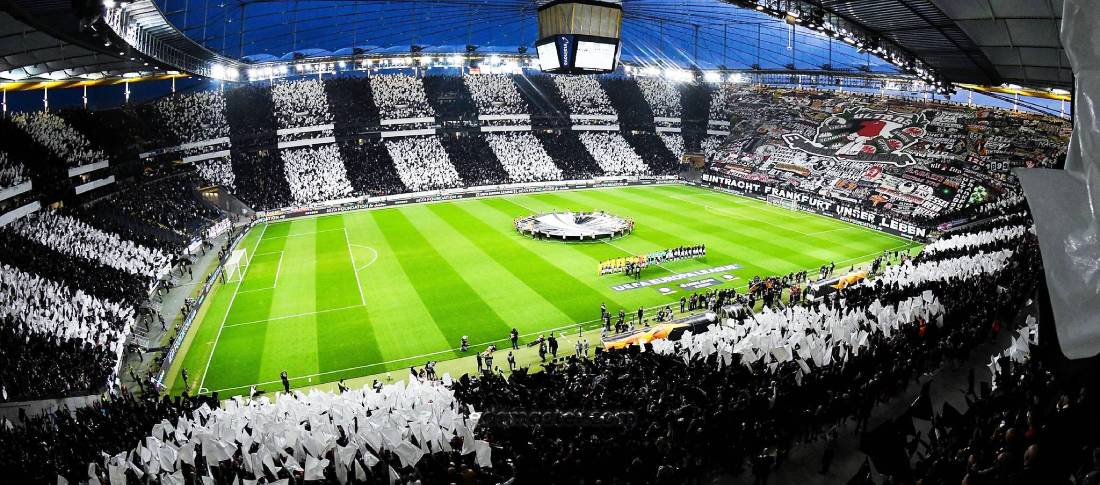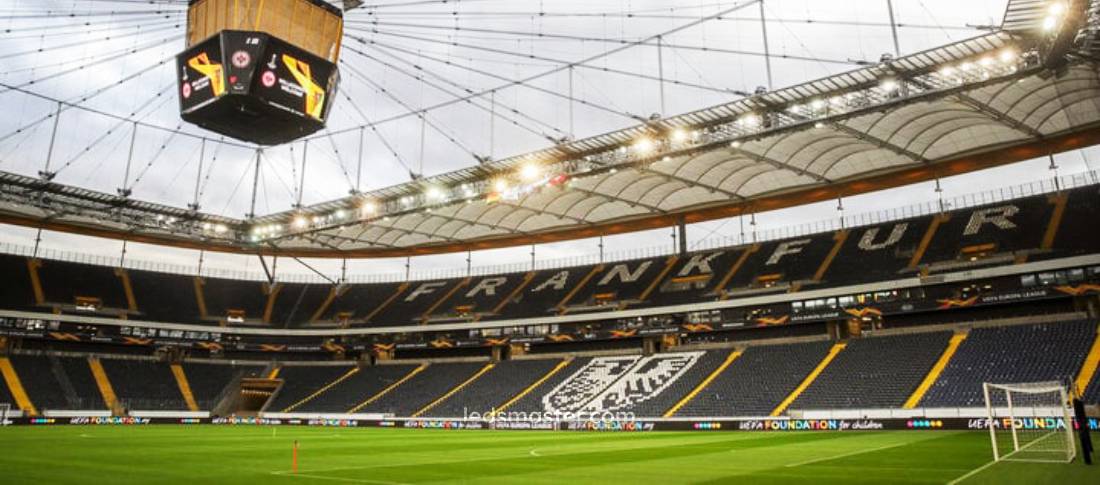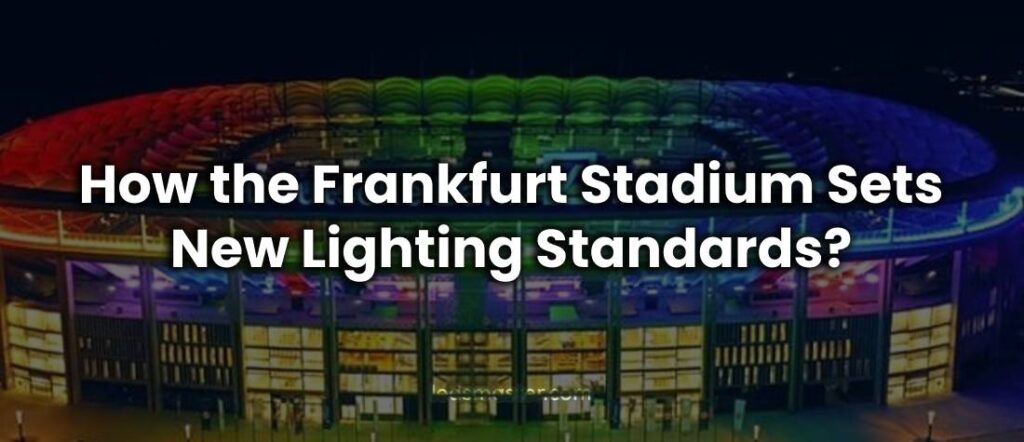The renovation of the Frankfurt Stadium, officially known as Deutsche Bank Park, marks a significant milestone in the evolution of modern sports venues. As one of Germany’s premier football stadiums, the updates being made promise to enhance not only the fan experience but also the operational efficiency and sustainability of the venue. This comprehensive renovation touches on multiple aspects, with lighting playing a crucial role in the transformation. This article explores the changes, impacts, benefits, and how other stadiums can look to the Frankfurt Stadium renovation as a benchmark, particularly in the realm of lighting.
Table of Contents
ToggleEnhancing the Fan Experience
Improved Visibility and Clarity
One of the key benefits of LED lighting is its ability to provide exceptionally bright and clear illumination. This enhancement is crucial for ensuring that every corner of the stadium is well-lit, which improves visibility for fans and players alike. The even distribution of light reduces dark spots and shadows, creating a more uniform and comfortable viewing experience. For fans in the stands, this means better sightlines and an overall improved view of the action on the field.
Enhanced Visual Appeal for Broadcasts
The impact of LED lighting extends beyond the stadium to television broadcasts and digital media. LED lights offer superior color rendering and brightness control, which enhances the visual quality of live broadcasts. This improvement in lighting ensures that colors appear more vibrant and details are clearer, providing viewers with a more immersive and engaging experience. The dynamic range of LED lights also allows for better adaptation to various lighting conditions, whether it’s a bright afternoon match or an evening game under the floodlights.
Creating Dynamic Pre-Game and Halftime Shows
LED lighting systems are also instrumental in creating dynamic pre-game and halftime shows. The advanced technology enables programmable lighting effects, including color changes, patterns, and synchronized light displays. These effects can be tailored to enhance the atmosphere and excitement of the event, contributing to a more engaging and memorable experience for fans. From dazzling light shows to color-themed displays, the new LED system will elevate the stadium’s ability to entertain and captivate audiences before and during halftime.

Impact on Operational Efficiency
Longevity and Durability
A key advantage of LED lighting is its extended lifespan. LED bulbs are designed to last up to 120,000 hours, which is substantially longer than the typical 2,000 to 3,000 hours offered by traditional halogen or metal halide lamps. This extended lifespan reduces the need for frequent replacements, which is particularly beneficial for a large venue like the Frankfurt Stadium. The reduced frequency of bulb changes minimizes logistical challenges and operational disruptions, allowing for uninterrupted stadium activities.
Lower Maintenance Requirements
In addition to their longevity, LEDs are known for their low maintenance needs. Traditional lighting systems often require regular inspections, cleaning, and replacements, which can be labor-intensive and disruptive. LEDs, however, are more robust and less prone to failure, reducing the frequency and extent of maintenance activities. This reliability means fewer interruptions during events and a more stable lighting environment. The reduced maintenance demands also ease the workload on the stadium’s facilities management team, allowing them to allocate resources more effectively across other operational areas.
Cost Savings
Although the initial cost of installing LED lighting can be higher than that of traditional systems, the long-term financial benefits are substantial. The reduced need for replacements and lower maintenance requirements translate to significant savings over time. Additionally, the energy efficiency of LEDs contributes to lower utility bills. The combination of these factors results in a more cost-effective lighting solution that supports the stadium’s operational goals.
Precision and Customization
Smart lighting controls allow for detailed adjustments of brightness and color temperature. This capability is crucial for tailoring the lighting to the specific needs of different events. For instance, during a football match, the system can be set to deliver bright and uniform illumination to ensure optimal visibility. For concerts or special events, the lighting can be adjusted to create specific effects and color schemes. This precision ensures that the lighting enhances the experience for both participants and spectators.
Event-Specific Adaptations
The ability to adapt lighting in real-time is a major advantage of smart controls. The system can be modified based on the type of event, whether it’s a daytime match or an evening concert. For daytime events, the lighting can compensate for natural light variations, while for evening or night-time events, it can be adjusted to create a more dramatic or visually appealing atmosphere. This adaptability allows the stadium to maintain high lighting standards across various events and conditions.
Integration with Venue Systems
The smart lighting system can be integrated with other venue management systems, such as building automation and event management platforms. This integration allows for coordinated lighting management across different operational areas of the stadium. For example, lighting can be synchronized with security systems to enhance visibility in critical areas or to highlight emergency exits. This integrated approach ensures that the lighting system supports not only the fan experience but also overall venue operations and safety.

Benefits of LED Lighting
Energy Efficiency
LED lighting stands out for its remarkable energy efficiency. LEDs use up to 75% less energy compared to traditional lighting sources such as halogen or metal halide lamps. This significant reduction in energy consumption is particularly impactful for a large venue like the Frankfurt Stadium, where energy demands are substantial. The decreased energy use translates directly into lower operating costs, which can lead to substantial savings over time. Furthermore, by reducing energy consumption, the stadium aligns itself with global sustainability efforts, contributing to a lower carbon footprint and supporting environmental conservation goals. The energy efficiency of LEDs is a crucial factor in modernizing the stadium’s operations and enhancing its commitment to eco-friendly practices.
Enhanced Illumination Uniformity
LED lighting systems provide more uniform illumination across the entire stadium. This uniformity eliminates dark spots and shadows, ensuring that every area of the venue is evenly lit. For players, this means better visibility on the field, while spectators benefit from an enhanced view of the action. The even distribution of light contributes to a more immersive and engaging experience for everyone in the stadium. Improved visibility also enhances safety and comfort, as well-lit areas reduce the risk of accidents and help fans navigate the venue more easily.
Dynamic Lighting Effects
One of the standout features of LED technology is its ability to create dynamic lighting effects. The new LED system at the Frankfurt Stadium will include programmable features that allow for color changes, patterns, and synchronized light displays. These capabilities enable the stadium to produce vibrant pre-game and halftime shows, as well as to enhance the atmosphere during various events. For instance, the lighting can be synchronized with music and multimedia elements, creating a more captivating and memorable experience for attendees. This level of customization not only boosts the stadium’s aesthetic appeal but also elevates the entertainment value of its events.
Sustainability and Environmental Considerations
Eco-Friendly Lighting Solutions
The renovation of the Frankfurt Stadium underscores a strong commitment to sustainability, with LED lighting at the forefront of this initiative. LEDs represent a significant leap forward in eco-friendly lighting technology, aligning with the stadium’s broader environmental goals. The focus on sustainability not only enhances the stadium’s operational efficiency but also contributes positively to environmental conservation efforts.
Reduced Energy Consumption
One of the primary environmental benefits of LED lighting is its remarkable energy efficiency. LEDs consume up to 75% less energy compared to traditional lighting sources such as halogen or metal halide lamps. This substantial reduction in energy use is crucial for large venues like the Frankfurt Stadium, where lighting demands are considerable. By lowering energy consumption, the stadium reduces its carbon footprint, which is a key component of its sustainability strategy. This reduction in energy usage directly contributes to decreased greenhouse gas emissions, supporting global efforts to combat climate change.
Absence of Harmful Substances
Another significant advantage of LED lighting is its lack of harmful substances. Unlike traditional lighting sources, which often contain toxic materials such as mercury, LEDs are free from such contaminants. Mercury is hazardous both during the manufacturing process and at the end of the lighting product’s lifecycle, as it can pose environmental and health risks if not properly disposed of. By choosing LEDs, the Frankfurt Stadium minimizes the risk of environmental contamination and ensures that its lighting solutions are safer for both the environment and human health.
Improved Waste Management Systems
The renovation will include the implementation of advanced waste management systems designed to minimize waste generation and enhance recycling efforts. By optimizing waste management processes, the stadium can significantly reduce its environmental footprint. This includes strategies for the efficient sorting, recycling, and disposal of construction materials and other waste products generated during the renovation. Improved waste management supports the overall sustainability goals of the project by ensuring that as much material as possible is recycled or reused, rather than ending up in landfills.
Use of Recyclable Materials
The renovation will also focus on using recyclable and sustainable materials throughout the construction and upgrade processes. This includes selecting materials that are either recyclable themselves or sourced from sustainable practices. By prioritizing recyclable materials, the stadium reduces the need for new raw materials and minimizes the environmental impact associated with material extraction and processing. This practice contributes to a circular economy model, where resources are used more efficiently and waste is minimized.
Benchmark for Eco-Conscious Venues
The integration of LED lighting and other sustainable practices sets the Frankfurt Stadium apart as a benchmark for environmentally conscious sports venues. By combining advanced lighting technology with comprehensive sustainability measures, the stadium demonstrates a commitment to reducing its environmental impact while enhancing operational efficiency. This approach not only benefits the environment but also serves as a model for other sports venues and large-scale facilities looking to implement similar eco-friendly strategies.
Learning from the Frankfurt Stadium Renovation
Emphasis on LED Technology
The Frankfurt Stadium’s focus on LED lighting underscores several key benefits that other stadiums can leverage. LED technology is celebrated for its energy efficiency, consuming up to 75% less energy than traditional lighting sources. This not only results in lower operational costs but also supports broader environmental goals by reducing the venue’s carbon footprint. For other stadiums, adopting LED lighting represents a practical step towards achieving significant energy savings and aligning with global sustainability initiatives.
The longevity of LED lights, lasting up to 120,000 hours compared to traditional bulbs, reduces maintenance requirements and operational disruptions. By minimizing the frequency of bulb replacements and lowering maintenance needs, stadiums can maintain a consistent and high-quality lighting experience for their audiences. This long-term reliability is a key consideration for stadiums aiming to enhance their operational efficiency and reduce long-term costs.
Integration with Smart Controls
The Frankfurt Stadium’s implementation of smart lighting controls offers additional lessons. The ability to precisely adjust brightness and color temperature allows for versatile lighting solutions tailored to various events. This adaptability ensures that the lighting system can enhance different types of events, from daytime sports matches to evening concerts. Other stadiums can benefit from integrating smart controls into their lighting systems to offer a dynamic and customizable experience, improving both functionality and audience engagement.
Dynamic Lighting Effects
Programmable lighting allows stadiums to create visually striking effects that can be synchronized with music, multimedia presentations, and other event elements. This capability enables the creation of captivating pre-game shows, halftime performances, and themed lighting that enhances the overall atmosphere of the stadium. By incorporating such features, other stadiums can elevate their entertainment value and offer fans a more memorable experience.
Improved Visibility and Aesthetics
The improved visibility provided by LED lighting ensures that every area of the stadium is well-lit, eliminating dark spots and enhancing the overall viewing experience. This uniform illumination contributes to better safety and comfort for spectators, making the venue more enjoyable and accessible. Additionally, the enhanced visual appeal of LED lighting can be used to reinforce the stadium’s branding and create a more visually cohesive environment.
Customizable Lighting for Diverse Events
The flexibility of LED lighting systems allows for easy customization based on the specific needs of different events. Whether it’s adjusting the lighting for a sports event, concert, or special occasion, stadiums can use programmable features to tailor the lighting to the event’s requirements. This adaptability not only improves the visual impact of the event but also ensures that the lighting supports the overall goals of the stadium’s programming.
Comparative Analysis with Other Stadiums
Examples of Innovative Lighting Designs
Several stadiums have already embraced advanced lighting technologies, offering useful comparisons for the Frankfurt Stadium renovation. For example, the Allianz Arena in Munich and Wembley Stadium in London are known for their innovative lighting designs. The Allianz Arena features an exterior that can change color to reflect different events, while Wembley Stadium utilizes LED lighting for both functional and aesthetic purposes.
Setting New Standards
The Frankfurt Stadium’s renovation takes inspiration from these examples but aims to push the boundaries further by integrating more advanced LED technologies and smart controls. By doing so, it sets a new standard for stadium lighting, combining efficiency, aesthetics, and functionality in a way that other venues can aspire to.
Conclusion
The renovation of Frankfurt Stadium, or Deutsche Bank Park, represents a transformative leap forward in modernizing sports venues. By prioritizing LED lighting, the stadium not only enhances visibility and aesthetics but also demonstrates a commitment to sustainability and operational efficiency. The integration of advanced lighting controls and sustainable practices offers a model for other stadiums aiming to improve their own facilities. The lessons learned from this renovation—ranging from energy efficiency and reduced maintenance to dynamic visual effects and eco-friendly practices—provide valuable guidance for future upgrades. As a benchmark in the realm of stadium lighting, the Frankfurt Stadium sets a high standard for blending innovation with environmental responsibility, paving the way for other venues to follow suit.

